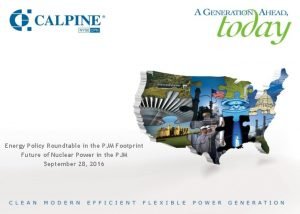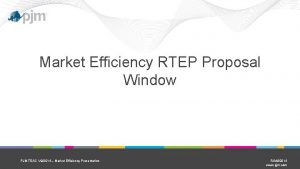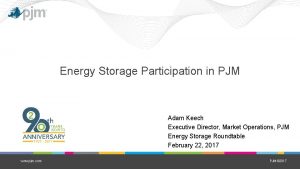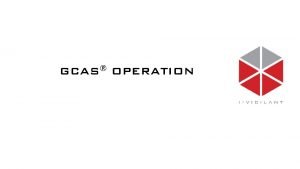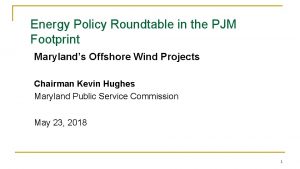Future of Competitive Transmission In The PJM Footprint








- Slides: 8

Future of Competitive Transmission In The PJM Footprint PJM Roundtable December 1, 2016 Robert A. Weishaar, Jr. bweishaar@mcneeslaw. com © 2016 Mc. Nees Wallace & Nurick LLC

The Large Consumer Perspective § Order 1000 – originally issued in 2011 (yes, it’s been 5 years) - has yet to deliver tangible benefits to consumers – some progress has been achieved on implementation, but the savings that FERC sought to achieve have not really hit any consumer bills yet § Should FERC abandon its efforts? § Absolutely not § Large consumers are “deeply concerned” that transmission is being overbuilt and over-priced § FERC needs to redouble its efforts and understand that decades of practices within the transmission business must be addressed in order to allow meaningful competition to take root 2 © 2016 Mc. Nees Wallace & Nurick LLC

Key Concepts and Issues § “Competition” – must be demonstrably workable, not unduly manipulated by artificial regulatory incentives or other vestiges of regulation § Incentives – § NONE (no more ROE adders for RTO participation; no ROE adders for “unique” projects; no ROE adders for being an independent transmission company) § Regulatory incentives are antithetical to the notion of competition § Section 219 obligations (regarding ROE adders) should be implemented only as necessary and only on a “minimalist” basis 3 © 2016 Mc. Nees Wallace & Nurick LLC

Key Concepts and Issues § Cost containment: § Should be at the discretion of the project developers/competitors § There should be no presumption (or, if there is a presumption, it should be heavily discounted) that cost containment provisions will be forever binding for facilities that may be deemed critical energy infrastructure § Considering LS Power concept of 3 -part test for cost containment § Standardization of the requests for proposals? § Should not be mandated § All competitive solicitation processes must allow for creativity and innovation 4 © 2016 Mc. Nees Wallace & Nurick LLC

Key Concepts and Issues § FERC Review: § FERC has the primary role for proper implementation of Order 1000 § FERC’s review of individual projects should be pursuant to a paper hearing § Efficiency and expedition are important § Performance-based Rates: § They have generally worked against consumer interests § Application of performance-based rates should be minimized 5 © 2016 Mc. Nees Wallace & Nurick LLC

Key Concepts and Issues § Proposal Development Cost Recovery By Non-Winning Entries? § Should not be allowed § Does not comport with the “used and useful” standard that has applied to rate recovery for decades § Information about the system: § Critical aspect of the process § Information about the existing system must be made fully available to potential competitors § Consumers paid for the development, collection, and maintenance of detailed information about the transmission system and such information must be shared in order to facilitate effective competition for their benefit § CEII protections should apply only as necessary 6 © 2016 Mc. Nees Wallace & Nurick LLC

Additional Tools § Order 1000 is only one tool in the toolbox for controlling transmission costs; others include: § Right-sizing ROEs to reflect today’s prevailing low-cost capital markets (the “new normal”) § Optimizing the capability of the existing system – implement the technology and software to provide dynamic transmission facility ratings § Carefully scrutinizing annual updates to formula rates, pursuant to formula rate protocols § Increasing transparency around the process of developing "Supplemental Projects" § Establishing and maintaining correct price signals to retail customers o Transmission planning is primarily a 1 CP-driven process; allocate costs accordingly 7 © 2016 Mc. Nees Wallace & Nurick LLC

Robert A. Weishaar, Jr. Mc. Nees Wallace & Nurick LLC 1200 G Street, NW, Suite 800 Washington, DC 20005 Phone: 202. 898. 0688 Fax: 717. 260. 1765 bweishaar@mcneeslaw. com 8 © 2016 Mc. Nees Wallace & Nurick LLC
